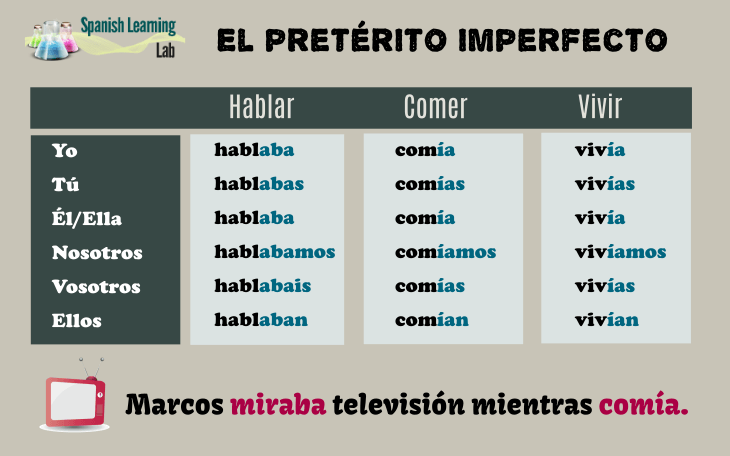
In Spanish Preterite Tense, the 3 regular patterns are for verbs ending in ar, er, and ir. A verb which does not follow these patterns exactly is called an irregular verb. Al hacer comparaciones, podemos destacar la superioridad, inferioridad o igualdad de calidad de uno a otro.

Irregular VerbsĪ verb is called a regular verb when its conjugation follows a typical pattern. Irregular Preterite Verbs hacer, hic- (most subjects), hiz- (third person singular), yo hice, l hizo poner, pus-, yo puse, l puso decir, dij-, yo dije, l. PAST SIMPLE TENSE IN SPANISH Hacer (To do), Hic-/Hiz-, Hice, hiciste, hizo, hicimos, hicisteis, hicieron Poder (can), Pud-, Pude, pudiste, pudo, pudimos. The imperfect tense is rarely irregular and can be easily conjugated from this form, which is the yo, and él/ella conjugation. The present perfect tense is formed by combining the auxiliary verb haber with the participio. Hacer appears on the 100 Most Used Spanish Preterite Tense Verbs Poster as the 15th most used irregular verb.įor the present tense conjugation, go to Hacer Conjugation - Present Tense. Hacer is conjugated as an irregular verb in the preterite tense. dijo nosotros dijimos vosotros dijisteis ellos / Uds. The verb is completely irregular in the preterite tense. However, the Nosotros form of "-Er" verbs follows the "-Ir" conjugation.Hacer is a Spanish verb meaning to do, to make. decir to say, to tell Preterite (Past) Tense / Pretrito (Pretrito Perfecto Simple) t dijiste l / Ud. The verb hacer ( conjugation) means ' to make ' or ' to do '. For example, coma muchos caramelos could be translated as I used to eat many. Context will tell you which tense is correct. Yes, the imperfect past tense can be translated to English in different forms. The Nosotros form in the Preterite is the same as the Nosotros in the Present Tense for "-Ar" and

#HACER PAST TENSE FOR FREE#
Learn this and more for free with Live Lingua.
#HACER PAST TENSE PLUS#
Plus lessons & quizzes to help you master Spanish conjugation. Read on below to see how it is conjugated in the 18 major Spanish tenses Try our app Get the most comprehensive verb tables for Escribir and 1,800+ other verbs. It is an irregular verb, and one of the most popular 100 Spanish verbs. This article needs additional citations for.
#HACER PAST TENSE HOW TO#
So there are only two (2) sets of endings we need to remember: those for the -Ar verbs and those for the -Er/-Ir verbs. A clean and easy to read chart to help you learn how to conjugate the Spanish verb hacer in Preterite tense. Hacer: Preterite Tense Using the chart below you can learn how to conjugate the Spanish verb hacerin Preterite tense. Escribir is the Spanish verb for ' to write '. Not to be confused with vosotros, the second person plural familiar form for Spanish conjugations.

However, in the Preterite (and, in fact, all other tenses and moods) the endings for -Er verbs and -Ir verbs are the same. 430 preterite tense, 310 subjunctive mood, 397 -ger, 429 -gir, 429 for giving directions, 110 go-go, 119-122 decir (to tell/say), 294 hacer (to make/do). Hacer Gerundio The gerundio of Hacer is haciendo. In the Present Tense there were three (3) sets of conjugations because the Nosotros form was different for -Ar, -Er, and -Ir verbs. The present perfect tense is formed by combining the auxiliary verb haber with the participio. Just as in the Present Tense, we remove the last two letters to get to the stem or root of the verb and then add endings. But, back to the Preterite! Let's take a lookĪt what endings we need to use when we conjugate verbs into the Preterite.


 0 kommentar(er)
0 kommentar(er)
